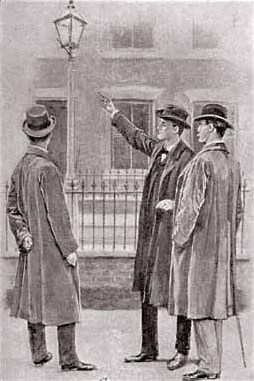
An image of Sherlock Holmes. Source
I was reading the story of King Shantanu and Ganga (by Donald A. Mackenzie) and I was really interested in the basis of the story. When all the extraneous elements are stripped away from it it is the story of a person not understanding why someone they trust is doing something seemingly awful. The character of course later learns that his partner had a very good motivation for doing this.
The story from the Mahabharata we read had a wife throwing her babies into the river despite her husband's confusion. As this is an Indian epic we as an audience know from the beginning the reason, but the king husband does not.
I like the base concept so I was trying to think of a new way to present the story, while still havig the same core backbone of a trust issue breaking two people apart. While I was thinking somehow a Sherlock Holmes short story came to mind, The adventure of the six napoleons.
Basically in this story, a thief has hid his jewel in one of six busts of napoleon before he was locked up. He got out and now must find the jewel. He doesn't know which napoleon bust it is in and he must find the bust's new owners. Meanwhile Sherlock has no idea why people's busts are being broken and neither does the audience.
I want to combine the stories by taking the trust element from King Shantanu and the jewel hiding in pottery element from the Sherlock story in order to create a fairly interesting original story. One major element I will change is to have the audience not find out about the twist until the main character does, to add more suspense.
This is the kind of story I could adapt into one of my short films, hence why I wanted to take another week to plan it out.












